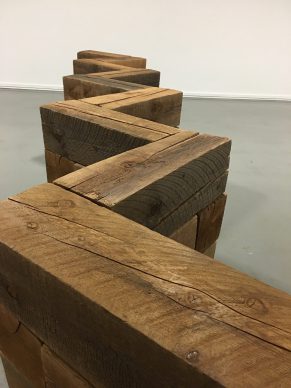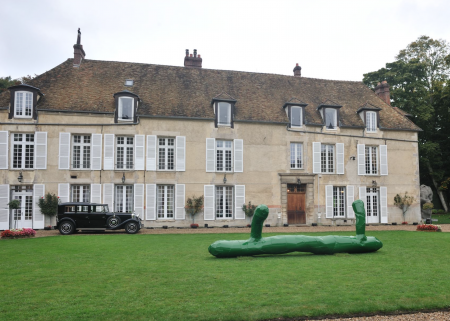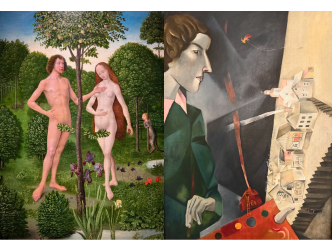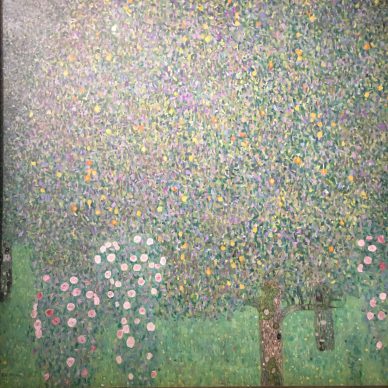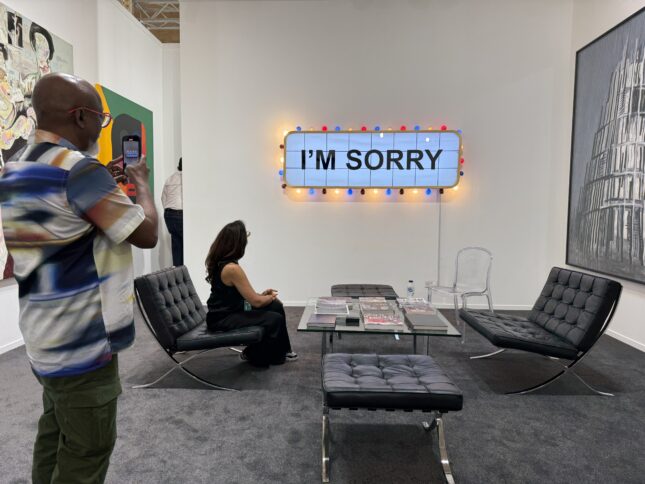
Meem Gallery Art Dubai
Middle East
Buying art—especially contemporary art—is an activity requiring financial ease as well as a calm state of mind. Wars, stock market downturns, shifting taxes… It’s fair to say this isn’t the most favorable time. And yet, a few geographic pockets around the globe seem more promising ground for the art market. Against all expectations, the epicenter of this trend now lies in the Middle East.
Saudi Arabia
Saudi Arabia is ramping up efforts to establish itself in the realm of contemporary art. From April 6 to 13, Riyadh hosted a hybrid event—part fair, part exhibition—called Art Week Riyadh. Forty-five galleries took part, including Paris’s Kamel Mennour and the multinational Gagosian. The presence of works from these major players was entirely funded by local authorities.
However, it’s impossible to gauge the commercial success of the event, seeing as no sales figures were released.
Art Dubai
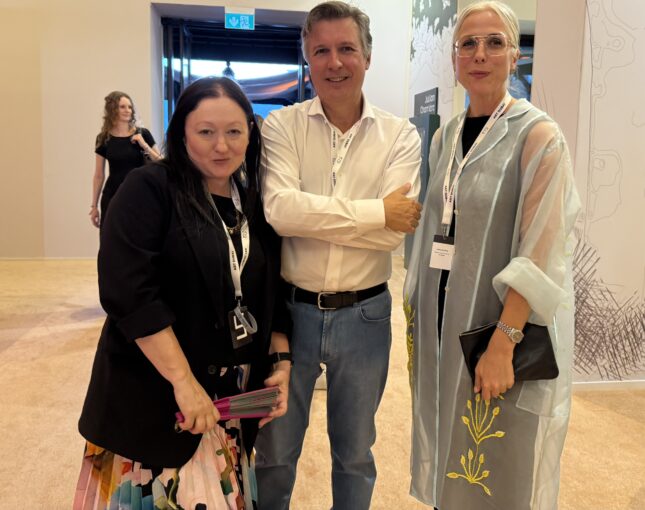
Alexie Glass-Kantor, Ben Floyd, Dunja Gottweis
Just days later, from April 18 to 20, Art Dubai—the Middle East’s leading fair—will be held with 120 participating galleries. As Ben Floyd, CEO of parent company Art Dubai Group, explains, this context is particularly favorable for art buying: “According to a study by New World Wealth and Henley & Partners, the number of millionaires [in Dubai] has doubled in ten years and is expected to double again by 2035. This is already positively impacting the luxury sector and, undoubtedly, art as well.”
Dunja Gottweis
This year, Floyd has brought in a new director from Art Basel, Dunja Gottweis, along with a new director of exhibitions, curator Alexie Glass-Kantor (See here the report about Art Dubai 2024).
Africa, the Middle East and India
Art Dubai’s advantage is that it spotlights artists less frequently seen at Western fairs: those coming from Africa, the Middle East and India. That said, the fair has long suffered from inconsistent programming, though it is showing signs of improvement this year, while a larger overhaul is in the works for future iterations.
Perrotin
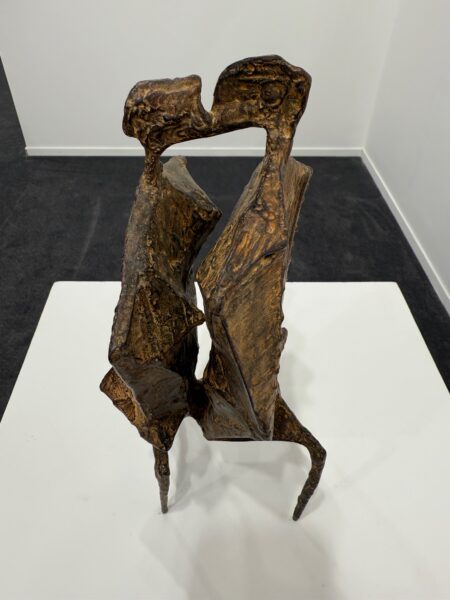
Lynn Chadwick
The multinational gallery Perrotin (1), of French origin, is reestablishing a Dubai location timed to coincide with the fair. “There are currently very few international galleries with a local presence,” explains the Dubai director, Cécile Attal, adding, “It’s one of the rare destinations today with such strong growth potential.”

Takashi Murakami
At its booth, the gallery offers a panoply of works, from a small bronze sculpture by British artist Lynn Chadwick (1914-2003), priced at €80,000, to a large painting by Japanese artist Takashi Murakami (born in 1962), depicting a monstrous flower-headed figure in a manga style (priced at over $400,000).
Efie Gallery
Efie Gallery, based in Dubai for two years now, recently opened a luxurious space in the city’s contemporary art hub, Alserkal Avenue. Specializing in contemporary African art, it’s run by a mother and two sons—the Mintah family—originally from Ghana. At the fair and in their gallery, they are showcasing the paintings and sculptures of Maria Magdalena Campos-Pons (born in 1959), a Cuban-born artist now based in Nashville.

Efie Gallery, Art Dubai
Her “portraits” of flowers represent, in her view, a universal language (priced between $7,500 and $225,000). Her work is enjoying significant institutional interest and features in collections including MoMA, the Getty Museum in Los Angeles and the Victoria & Albert Museum in London.
“What’s interesting about Dubai is that, in terms of art, we’re looking at a blank canvas. There’s room to educate and build,” says Kwame Mintah, one of the sons, who has also created a cozy in-gallery music lounge for listening and farniente.
Imran Qureshi
Also in the Alserkal district, Delhi’s influential gallery Nature Morte is staging a spectacular installation by a famous contemporary Pakistani artist, Imran Qureshi (born in 1972), at Concrete, a space designed by Rem Koolhaas. Qureshi has created a kind of woven wall made of nylon threads, like a giant open book drawing on abstract iconography and a traditional Pakistani technique.
Blue and red for America
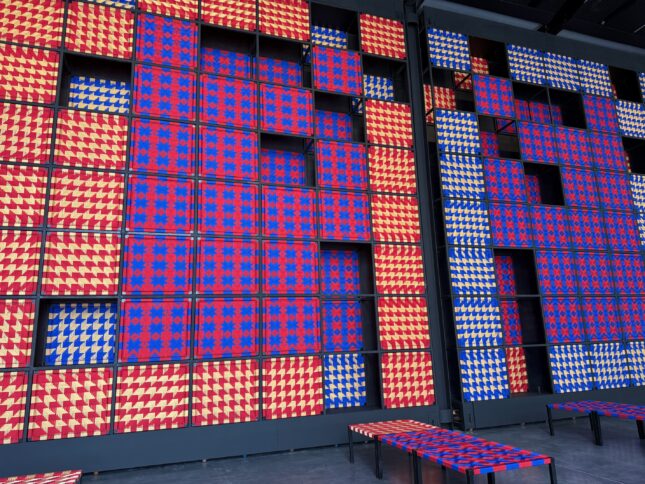
Imran Qureshi
The dominant blue and red tones are inspired by the American flag, reflecting, according to the artist, “the pervasive penetration of American culture in the region, resulting in a kind of pixelation.” Qureshi also paints gouaches in the style of illuminated miniatures depicting highly contemporary scenes (war, nature’s resurgence…), each priced at £50,000.
To appreciate is to support.
To support is to donate.
Support JB Reports by becoming a sustaining Patron with a recurring or a spontaneous donation.
Andrée Sfeir- Semler
At Art Dubai, the Beirut- and Hamburg-based gallery Sfeir-Semler is a veteran of the Middle Eastern art market. “The development of art in the Middle East in the last few years has been exponential,” says founder Andrée Sfeir-Semler. “When we opened in 2006 in Beirut, the market for Arab artists was inexistent. Now it’s everywhere.” She mainly works with institutions, but notes,
Complex political climate
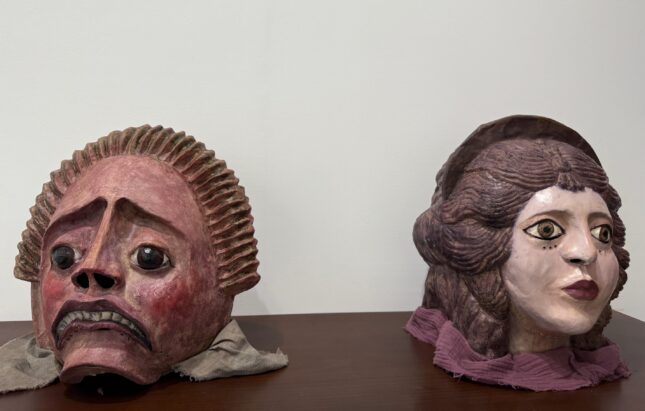
Wael Shawky
“The current political climate is extremely complex. Several sales were canceled in Germany last year. We are now also being impacted by US stock market performance. Museum-supporting collectors are withdrawing for economic reasons. And some are reluctant to back artists with ties to Palestine.”
Wael Shawky
Among the works at her booth are two large papier-mâché masks by Egyptian artist Wael Shawky (born in 1971), designed in the spirit of Greek tragedy (unique pieces, priced at €40,000). At the 2024 Venice Biennale (See here a report about the 2024 Art Biennale), Shawky represented Egypt with a highly publicized musical film, whose seven editions have all been acquired by institutions, from SFMOMA to Hong Kong’s M+ museum.
Franco Noero
Gallerist Franco Noero made the trip from Turin. In Dubai, he discovered the Emirati conceptual artist Hassan Sharif (1951-2016), whom he has represented since 2019 and whose work he deems as particularly important. After studying in London, Sharif returned to live in Dubai.
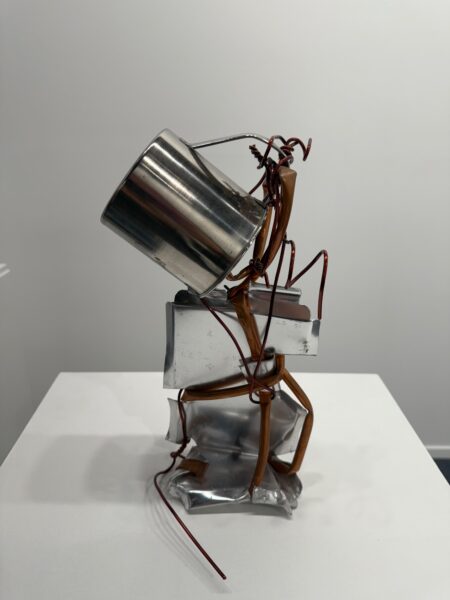
Hassan Sharif
His more recent works—like those at Noero’s booth—use everyday materials, which he accumulates, transforms and often binds together. They speak of obsessions, the charm of the trivial and of consumerism (priced between $22,000 and $35,000). His work has been exhibited in museums in Sharjah, UAE, and Doha, Qatar. The Isabelle gallery is alos presenting an exhibition dedicated to Hassan Sharif at Al Serkal until 31 May.
Christine Safa
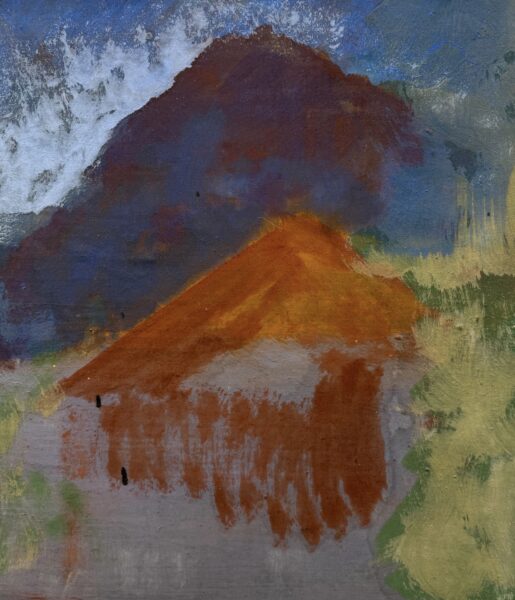
Christine Safa
In Dubai, artists’ Middle Eastern roots are often foregrounded. One example is French painter Christine Safa (born in 1994), who frequently returns to Lebanon, the land of her roots. One of the few New York galleries at the fair, Bortolami, is showing three of her works: muted-toned landscapes with diluted forms meant to evoke memory. A delicate painting style that’s already drawing international interest, though none of her major canvases has yet appeared at auction (priced between €8,000 and €16,000). Safa is also represented in Paris by Galerie Lelong.
From Tehran
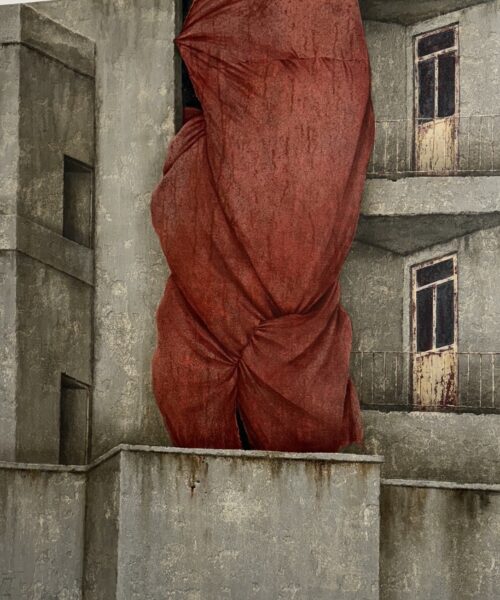
Azin Zolfaghari
Art Dubai hosts three Iranian galleries, including Sarai, with locations in Tehran and Mahshahr in the South. Among other works, it is showing astonishing paintings depicting decaying building facades animated by floating red curtains escaping from windows. These details from urban scenes are the creations of Azin Zolfaghari (born in 1982): they are priced at $3,800—note the modest sum for emerging Iranian artists. (See here a report about Tehran Art scene).
Suffocation and repression
She was recognized in 2022 by the Sovereign Asian Art Prize in Hong Kong, dedicated each year to an artist from the continent. The gallery’s statement is clear: “Azin’s paintings reflect a distorted sense of identity, isolation, suffocation and repression, mirroring the lack of open dialogue within dominant power structures.”
In Dubai—a city of leisure and tourism—the great questions of global politics inevitably surface, even if only in veiled terms.
(1) Meanwhile Le Figaro has just confirmed that the European investment fund Colony Investment has acquired a 51% stake in the Perrotin gallery, following two years of negotiations (See here the interview of Emmanuel Perrotin about the participation of Colony).
Support independent news on art.
Your contribution : Make a monthly commitment to support JB Reports or a one off contribution as and when you feel like it. Choose the option that suits you best.
Need to cancel a recurring donation? Please go here.
The donation is considered to be a subscription for a fee set by the donor and for a duration also set by the donor.


